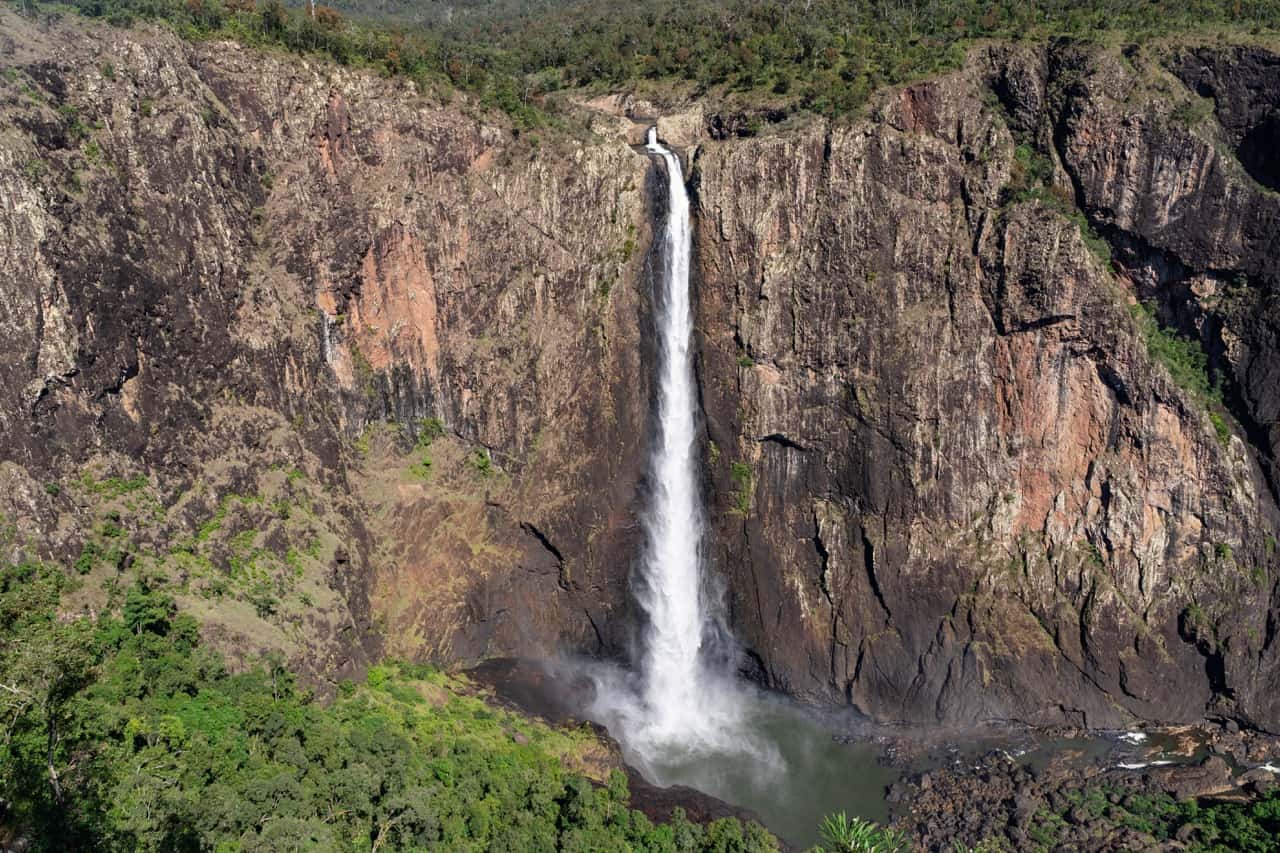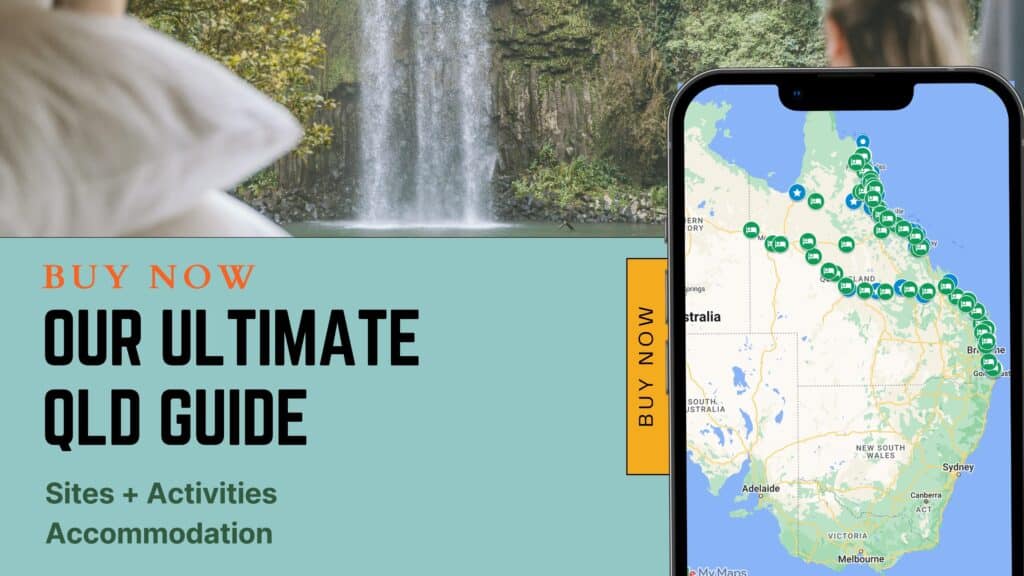Wallaman Falls: Your guide to Australia’s Highest Waterfall
The magnificent Wallaman Falls are the longest single-drop waterfall in Australia. Located in Girringun National Park, this popular tourist destination is a must-see when visiting Townsville and the area. The main lookout provides breathtaking views of the surrounding rainforest and inspirational views of the waterfall.
The Djyinda track is an excellent hike for nature lovers, and swimming at the base of the falls is a refreshing way to cool off on a hot day. Camping is also available near the falls, making it the perfect spot to spend a few days exploring everything Girringun National Park Wallaman Falls offers.
This blog post will tell you everything you need to know to visit Wallaman Falls.
About Wallaman Falls
The Warrgamaygan Aboriginal people claim Wallaman Falls as one of their traditional lands. The local aboriginal name for the falls, ‘Wallaman’, means ‘That water’.
The area’s Indigenous people, ‘Nginba Warrgamaygan Ngarji’, welcome you to this sacred place and hope you enjoy your visit.
Henry Stone is accredited as the first European to settle in the Herbert River Valley and lay eyes on the falls. Together with George Elphinstone Dalrymple and Mr Farquahar, they received credit for discovering the falls in 1864.
Wallaman Falls is part of the Wet Tropics World Heritage Area. The Wet Tropics World Heritage Area contains some of the earth’s oldest rainforests and numerous endangered plants and animals.
Technically speaking, Wallaman isn’t Australia’s highest waterfall. Instead, at 268 metres (879 ft), Wallaman falls is the largest permanent single-drop fall in Australia, a lofty title nonetheless. Australia’s highest falls are actually Elizabeth Grant Falls, also in Queensland, at 300 metres high.
Wallaman falls are accessible via sealed roads from Townsville and Ingham, and instructions on getting there can be found later in this post.
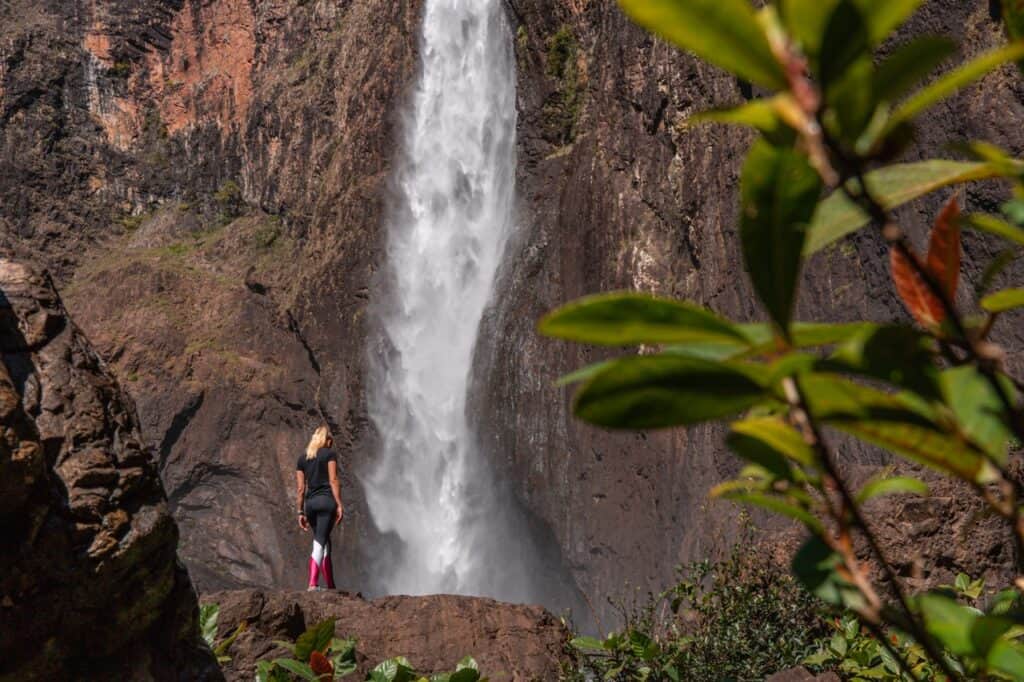
Girringun National Park
Girringun National Park is located in Tropical North Queensland, approximately 170km northwest of Townsville, a drive that will take about two and a half hours.
Girringun National Park covers an area of 1,538 km2 at the southern end of the Wet Tropics and is home to various ecosystems, including world heritage rainforest, deep gorges, wetlands, and ancient volcanos. There are also several fresh water creeks and rivers flowing through the park.
The Wallaman Falls section of the park is best known for its spectacular waterfalls, including Wallaman Falls, located in the southern part of Girringun National Park.
Camping is permitted in designated areas within the park, but we will discuss this later.
How to get to Wallaman Falls
Wallaman Falls is located approximately 50km from Ingham and is situated in North Queensland, 110 kilometres north of Townsville and 235 kilometres south of Cairns. As the central town of the Hinchinbrook Region, Ingham provides easy access to natural attractions such as Wallaman Falls.
To get to Australia’s tallest waterfall by car, make your way to Ingham and follow the signs onto Wallaman Falls. There is good signage, and you will only travel on sealed roads. If you don’t have your own car, you can hire one here.
Although conventional vehicles can use the road, it is pretty winding, and the road climbs steeply, so towing caravans is not advised. To get to the falls, you must travel over the Seaview Range – a mountainous area that is 792 metres tall.
From Ingham, take Lannercost Street west until you reach Abergowrie Road. From there, it’s about a 10 km drive to the small township of Trebonne.
After about 17km, turn left at Blackbraes Road and continue for another 13km until you reach the parking lot for Wallaman Falls Lookout. The main lookout is only a quick walk from the car park.
The Wallaman Falls car park has lots of parking spaces and a toilet. If you keep driving for another few hundred metres after the car park, past Lookout Road, you’ll arrive at Wallaman Falls campsite. We will talk more about camping later in this post.
What to expect at Wallaman Falls
Wallaman Falls is a must-see for any traveller to North Queensland. There are many different ways to experience the falls, each unique.
Visitors can take in the stunning views from the lookout, go for a hiking trail that leads down to the base of the falls or take some other short walking tracks to explore the area. At the base of Wallaman Falls, you can swim in the refreshing waters.
You can also camp overnight at one of the nearby camping grounds. Read on to find out everything you can expect when visiting this natural wonder.
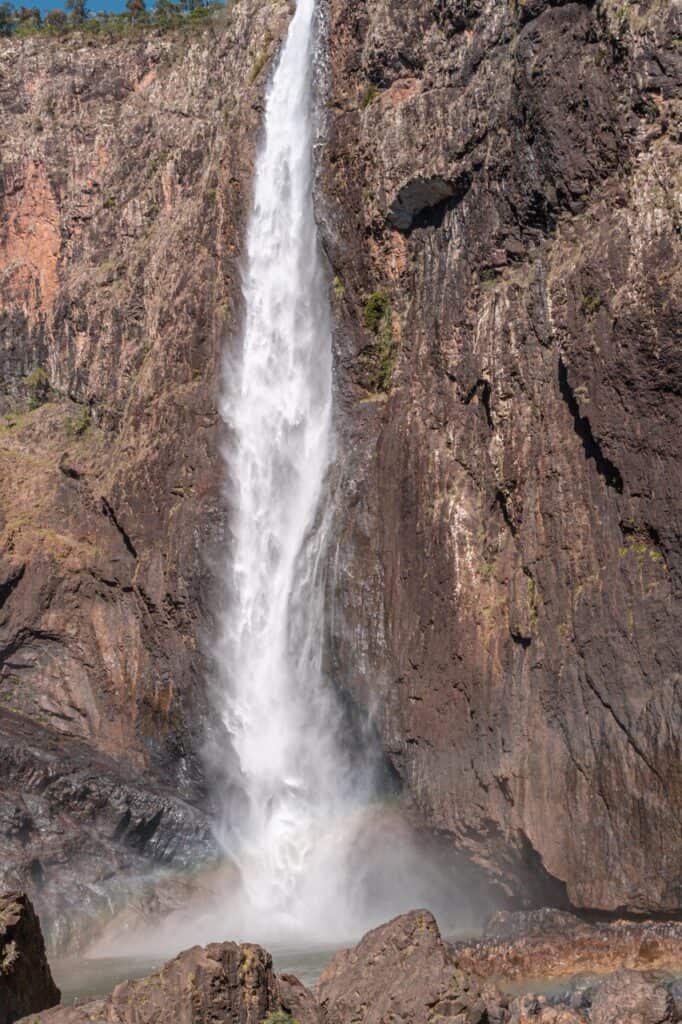
WALLAMAN FALLS LOOKOUT
The first thing most visitors will want to do upon arrival at Wallaman Falls is to head to the lookout point.
The lookout is located at the top of the falls, just a short walk from the car park, and it offers stunning views of the falls and the surrounding area, often through a rainbow-fringed cloud of mist.
From the first lookout, you can take a short walk to the second lookout for even more stunning views of Herbert River Gorge and Valley.
Be sure to bring your camera to capture some fantastic shots.
The lookout area is perfect for daytime picnics and has toilet facilities, a picnic area, and barbecues.
THE WALLAMAN FALLS HIKE (DJYINDA WALK)
The second way to experience the falls is by hiking the Djyinda track. The Djyinda track is a 3.2km return hike that takes you to the bottom of the falls. This is a moderate hike, steep in some sections, and it can be pretty slippery when wet. You should wear appropriate footwear and take caution when hiking this track.
The walk starts with a short, sloping path made of bitumen that leads from the carpark to the Gorge Lookout.
From here, the Djyinda track becomes a steeper, rougher track down through the world heritage rainforest to Stony Creek in the gorge below. Lower down, the waterfall can be seen through the greenery.
You will finally arrive at the base of the plunging waterfalls. Take a seat on the large rocks, enjoy spectacular gorge views, and marvel at the age and size of this natural wonder.
The hike back up was more challenging for us as it was uphill the whole way, but not too hard.
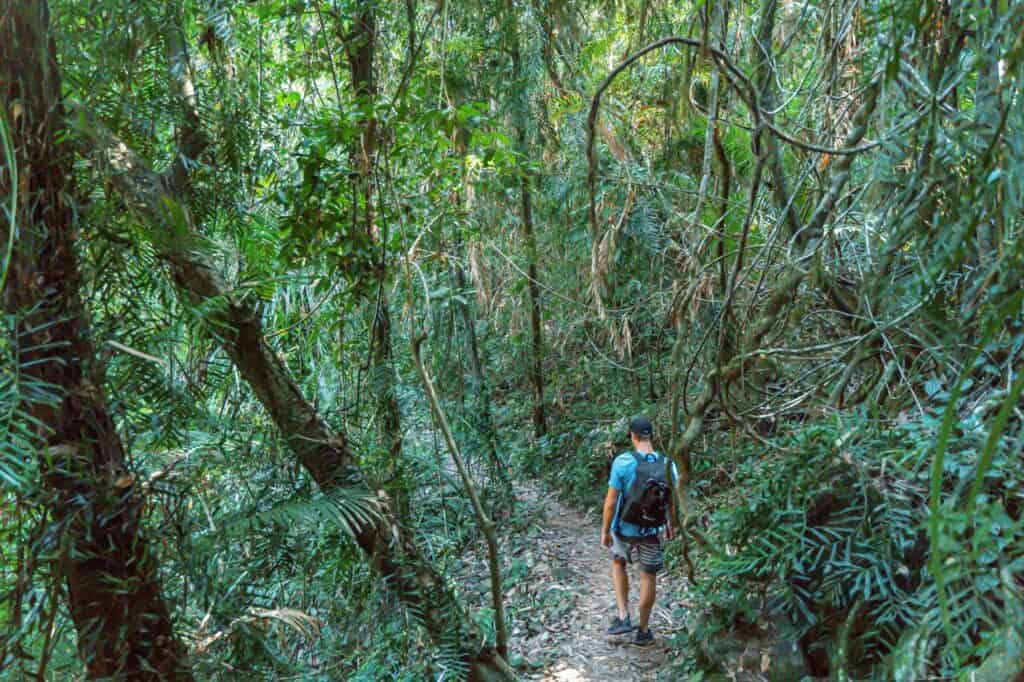
WET TROPICS GREAT WALKS
For adventure-seekers, Wallaman Falls is the entrance to the Wet Tropics Great Walk, where you can select between three walking tracks (Buujan Quiinbiira Walk, Djagany (Goanna) Walk and Gugigugi (Butterfly) Walk).
The Wet Tropics Great Walks allows you to explore the region’s different landscapes, discover plunging waterfalls, and take you through the traditional homeland of the Warrgamaygan Aboriginal people. The land is extremely important to them culturally.
We did not do any of these walks, so we won’t bring any details here. However, if you are interested, check all the information you need, including trail guides and maps, on the Queensland Government website.
Can I swim at Wallaman Falls?
Yes! You can swim in the twenty-meter-deep pool at the bottom of the falls, but swimming is not advisable in some circumstances. In addition to swimming at the base of the falls, you can also swim in Stone River by taking the Bungaroo Trail to the Wallaman Falls Camping Area.
Swimming in the creek during the Wet Season is dangerous when the water level is high, and currents are strong. You could be swept away and end up at the falls.
Camping at Wallaman Falls
If you’re looking for a more immersive experience, then overnight camp at Wallaman Falls might be for you.
There are several campgrounds in Girringun National Park, but the Wallaman Falls campground is by far the most popular. The campsite is located only a few hundred metres from the falls and is a great place to relax and unwind.
The campsite is called Wallaman Falls Campground, in Girringun National Park. It is a paid campground that offers toilets, cold showers, wood fire barbecues, picnic tables, shelter sheds and water (unsuitable for drinking).
You will need a camping permit, so book your stay in advance through this link.
Please be aware that no powered sites are available, and pets are not permitted as this campground is within the national park.
You can get there with any vehicle; the campsite is accessible to RVs, camper trailers and motor homes. Camping in tents is also allowed.
Please remember to leave no trace and respect our parks by taking all your rubbish with you when you leave.

